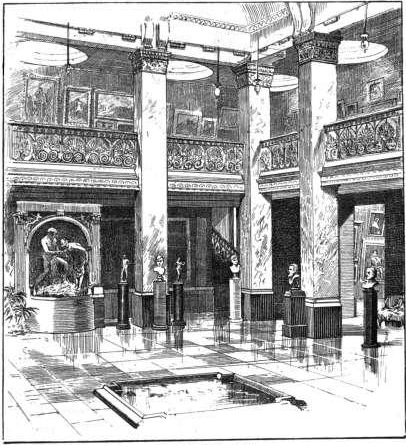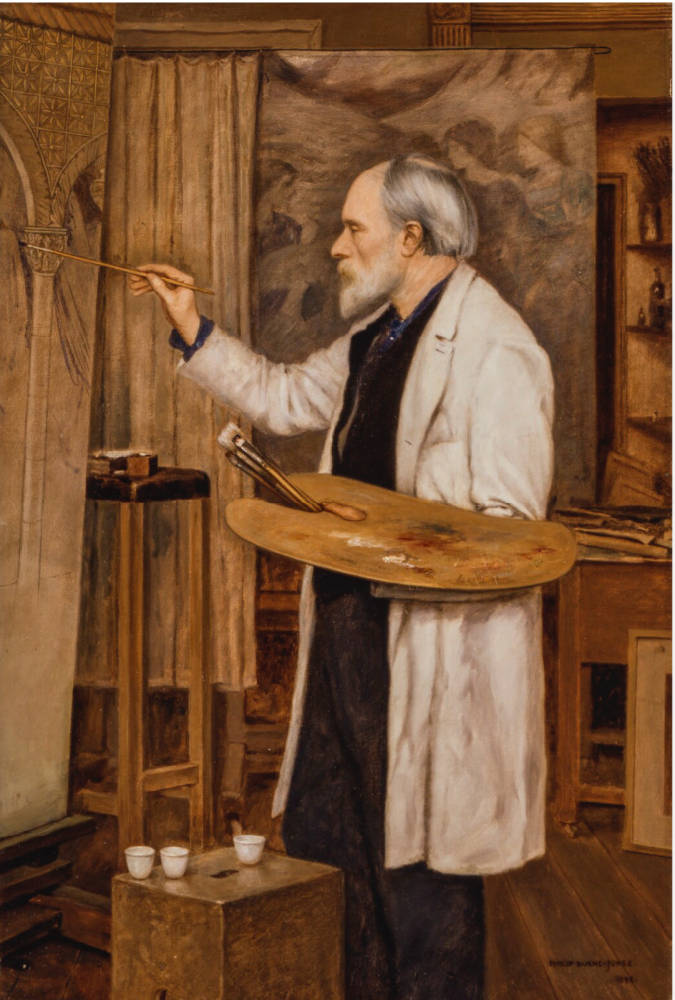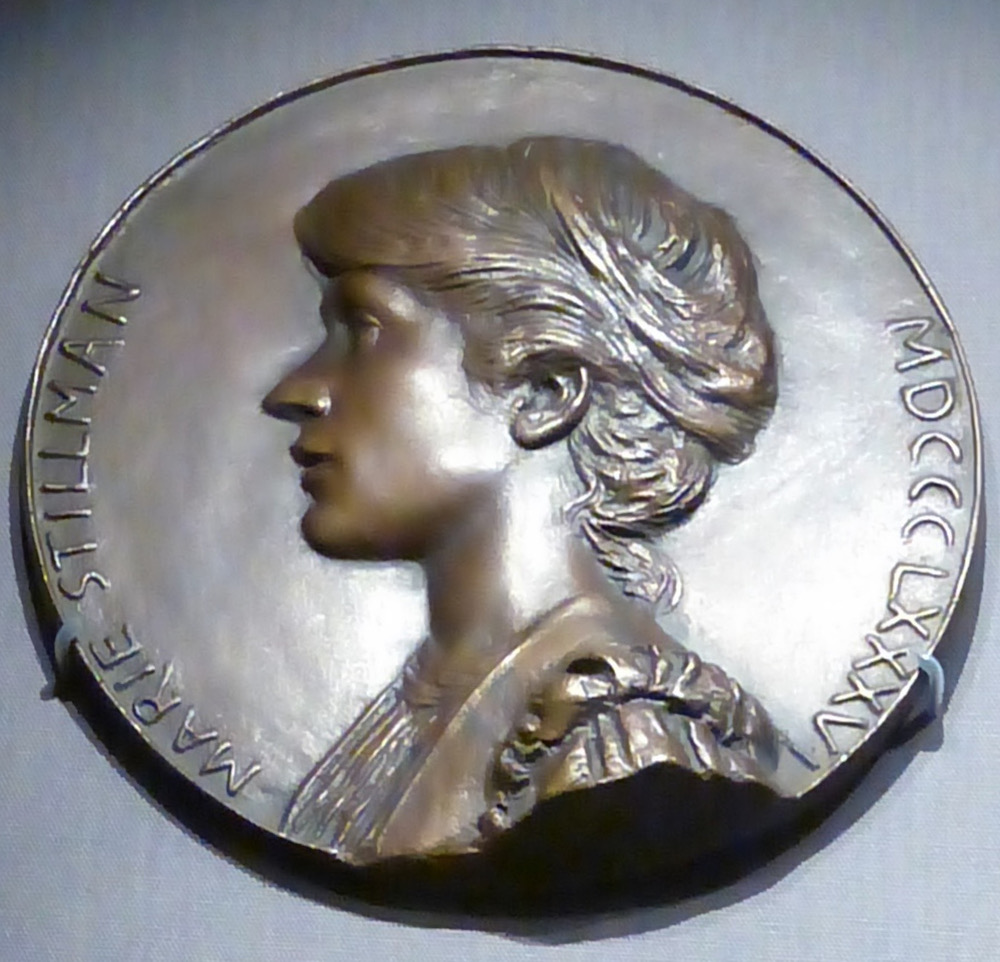Although some Aesthetic Movement art was accepted for exhibition at the Royal Academy it was always considered eccentric and was more tolerated than praised. The progressive artists associated with this movement therefore tended to favour more congenial exhibition venues.


After continuing disagreements with Coutts Lindsay about the direction of the Grosvenor Gallery, its directors Carr and Hallé wrote a letter to The Times on November 2, 1887 outlining their grievances and resigned from the gallery. They then set about founding the rival New Gallery that opened on May 8, 1888. The gallery was located at 121 Regent Street and was built on the site of a previous fruit market. It was designed by the architect Edward Robert Robson and constructed in little more than three months by the well-known builders Messrs. Peto.
In his New Gallery Notes Henry Blackburn praised the interior of the gallery “not only on account of the short time in which it has been completed, but for the ingenuity and good taste of the architect in dealing with existing conditions - in giving dignity and beauty to a site and to a structure where meaness had reigned supreme.” Blackburn's comments make clear that Robson had not designed a new building but adapted a former market when he explains that the “cast-iron columns, which supported the roof when this building was used as a co-operative market, have been cased with Cipolino marble, and now present the appearance of massive marble shafts, which carry the roof with delicately modelled capitals of Greek type, solidly gilded.“ Similarly, ”the architrave, frieze, and cornices above the columns are covered with platinum, giving the effect of dead silver. The floor of the hall is paved with marble, with a fountain in the centre. The beautiful panels of Giallo and Cipolino marble, which enrich the central courtyard and form so excellent a background for Sculpture, should be noticed; also the harmonious wallpapers and generally good arrangement and lighting of the galleries” (3)
Compared to the Grosvenor Gallery the decorations of the New Gallery were simpler and less extravagant and imposing. The West and North Galleries on the ground floor were devoted to oil paintings while the first floor balcony around the Central Hall was used to display smaller works in oils, watercolours, etchings and drawings. Sculpture was displayed in the Central Hall itself. When the gallery held its first exhibition The Art Journal commented on its facilities:
The advantages of the New Gallery are manifest; not so its defects. So judicious, from a decorative point of view, is the hanging that one is slow to become conscious of the common fault of private galleries: an equal prominence of the good and bad of certain favoured schools. The rooms themselves co-operate very powerfully in the pleasant fascination of a new exhibition. In the first place, sculpture has found a home in the marble entrance-hall, where it stands some chance of being enjoyed, as it never was in the Grosvenor. Not unlike the open court of a Roman house, this gallery, with its cool marble walls, green plants, and limpid fountains, seems made for statures and bronzes, and an occasional sojourn in it gives the visitor a new fund of energy for further examination of the pictures. It is surrounded by a balcony very well adapted for the exhibition of drawings, water-colours, and small pictures which demand close study. In this way the two fine picture galleries are left unembarrassed, and we are spared the ordeal of hunting for good work through small overcrowded rooms. [221]
Artists Associated with the New Gallery




Left: Sir Edward Coley Burne-Jones, Bt ARA by his son Sir Philip Burne-Jones). 1898. Oil on canvas, 30 x 20 ½ inches (762 mm x 522 mm) Courtesy of the National Portrait Gallery, London NPG 1864 Given by Sir Philip Burne-Jones, 2nd Bt, 1920. Middle left: William Holman Hunt. Sir William Blake Richmond. 1900. Oil on canvas, 25 ⅞ x 21 ⅜ inches (658 mm x 543 mm). © National Portrait Gallery, London NPG 2803. Given by the sitter's daughter, Gladys Millais Mulock Holman Hunt (Mrs Michael Joseph), 1936. Middle right: Self-Portrait by Sir Lawrence Alma Tadema. Source The Magazine of Art (1883). Right: Marie Stillman. Maria Cassavetti Zambaco (1843-1914). 1886. Alloy metal, 134 mm. Inscription: Marie Stillman MDCCCLXXXVI Collection: British Museum (ref. 1887,1207.1) [Click on images to enlarge them.]
The Consulting Committee of the New Gallery included such well-known painters as Edward Burne-Jones, William Holman Hunt, William Blake Richmond, and Lawrence Alma-Tadema and sculptors such as Alfred Gilbert and Edward Onslow Ford. Burne-Jones, his close followers like J. R. S. Stanhope, Evelyn De Morgan, Strudwick, Marie Stillman, T. M. Rooke, Murray, and Walter Crane, as well as many of the Grosvenor Gallery's other important Aesthetic Movement artists like Frederick Leighton, G. F. Watts, Richmond and Edward Poynter transferred their allegiance to the New Gallery. Albert Moore continued to exhibit at the Grosvenor Gallery in 1888 but later exhibited at the New Gallery in 1890 and 1892. James McNeill Whistler never exhibited at the New Gallery, having already switched his allegiance to the Society of British Artists, being elected a member in 1884 and its President in 1886. By the time the New Gallery opened in 1888 he was exhibiting at the New English Art Club.
The New Gallery was the last of the three galleries whose principal exhibiting focus was the Aesthetic Movement. In addition the New Gallery did a great deal to promote the burgeoning Arts and Crafts Movement. In October and November 1888, the New Gallery hosted the first showcase of industrial and applied arts by the Arts and Crafts Exhibition Society that had been founded in 1887 to champion the decorative arts and handicrafts of designers and craftsmen and women. The Society held shows annually at the New Gallery from 1888-90 and then roughly every three years thereafter up until 1910 when the New Gallery closed. By 1910 Aesthetic Movement art was long out of fashion. In 1910, in fact, the first Post-Impressionist exhibition in London was held in the Grafton Galleries, showing how far progressive art had changed since the Grosvenor Gallery opened in 1877 and the New Gallery in 1888.
Links to Related Material Associated with the Aesthetic Movement
Bibliography
“Exhibitions. The New Gallery.” The Art Journal, New Series (1888): 221-22.
Blackburn, Henry. New Gallery Notes 1, London: Chatto and Windus, 1888.
Last modified 30 May 2022